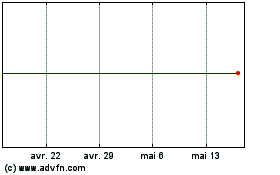More needs to be done to end the risks posed by banks that have
grown too big to fail, Federal Reserve Bank of Minneapolis
President Neel Kashkari said Tuesday.
In a speech to the Brookings Institution in Washington, D.C.,
Mr. Kashkari said the 2010 Dodd-Frank Act "did not go far
enough."
"I believe the biggest banks are still too big to fail and
continue to pose a significant, ongoing risk to our economy," he
said.
Mr. Kashkari, a former Treasury Department official in the
George W. Bush administration who helped engineer bank bailouts
during the financial crisis, called for breaking up the largest
banks, turning them into highly regulated public entities similar
to nuclear power plants or taxing leverage throughout the financial
system.
The remarks were the first delivered by Mr. Kashkari since
becoming Minneapolis Fed chief last month. They suggest he plans to
tackle financial-regulation topics aggressively and push policy
makers—both at the Fed and in Congress—to prepare for the next
financial crisis.
The new Fed official took particular aim at financial-sector
lobbyists, saying they had "thrown up endless objections to
fundamental change."
"The economy is stronger now" than it was in 2010 when the
Dodd-Frank Act was passed, he added. "The time has come to move
past parochial interests and solve this problems."
Mr. Kashkari's remarks contrast with Fed Chairwoman Janet
Yellen, who told lawmakers last week that regulatory efforts in the
wake of the crisis have been effective.
"The steps that we have taken over the last seven years have had
very substantial payoffs in the form of a much more resilient and
stronger, bette-capitalized, more liquid banking system," she told
the Senate Banking Committee on Thursday.
The Minneapolis Fed will hold policy meetings in spring to study
possible solutions to the risks posed by the largest banks, Mr.
Kashkari said. The Fed branch plans to release recommendations by
the end of the year, he added.
Mr. Kashkari's speech also comes as bank stocks have been taking
a beating in global stock markets.
"Options such as these have been mentioned before, but in my
view, policy makers and legislators have not yet seriously
considered the need to implement them in the near term," he said.
"The time has come to move past parochial interests and solve this
problem."
Mr. Kashkari called on Congress to implement "bold,
transformational solutions" to end the risks posed by large
banks.
Large bank failures can have a devastating economic impact, he
said, particularly when the economy is weak. That means policy
makers may be forced to bail out large banks once again. Mr.
Kashkari acknowledged the difficulty of implementing such a
sweeping overhaul of the banking sector but said the risks of not
performing such an overhaul are greater.
"Those potential shortcomings must be weighed against the actual
risks and costs that we know exist today," he said.
Mr. Kashkari didn't discuss monetary policy in his speech. In a
question-and-answer session with reporters afterward, he deferred
to the Fed's policy-making committee when asked about interest rate
policy.
A former investment banker, Mr. Kashkari rose to prominence
during the financial crisis for running the Troubled Asset Relief
Program under the George W. Bush administration. The controversial
$700 billion effort pumped money into wobbly banks during the 2008
crisis in order to stabilize the financial system.
On Tuesday, he cited those lessons as guiding his
recommendations.
In 2014, he ran for governor of California as a Republican but
lost to incumbent Gov. Jerry Brown.
Although he isn't a voter on the central bank's policy-making
committee this year, Mr. Kashkari has generated a significant
amount of interest, in part because his views on monetary policy
remain something of a mystery. Unlike his Fed colleagues, Mr.
Kashkari maintains an active Twitter account but since his
appointment hasn't used the platform to publicize his policy
views.
He takes over at a time of considerable uncertainty for the U.S.
and world economies. After several years of solid performance,
global financial markets have been roiled lately by a slowing
China, collapsing oil prices and worries over diverging monetary
policy from the developed world's central banks.
Last December, the Fed raised interest rates off the near-zero
level where they had hovered since 2008 and signaled more rate
increases were coming this year. That now looks in doubt as Fed
officials, including Chairwoman Janet Yellen, have cited fears that
global weakness could slow the U.S. economy.
The European Central Bank and the Bank of Japan, meanwhile, have
moved in the opposite direction, dropping interest rates to
negative levels and launching asset sale programs to stimulate
their economies.
Write to David Harrison at david.harrison@wsj.com
(END) Dow Jones Newswires
February 16, 2016 15:05 ET (20:05 GMT)
Copyright (c) 2016 Dow Jones & Company, Inc.
Twitter (NYSE:TWTR)
Graphique Historique de l'Action
De Juin 2024 à Juil 2024

Twitter (NYSE:TWTR)
Graphique Historique de l'Action
De Juil 2023 à Juil 2024
